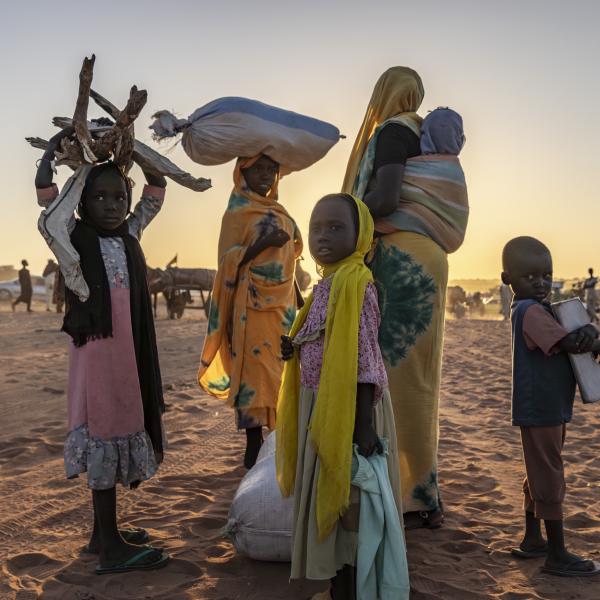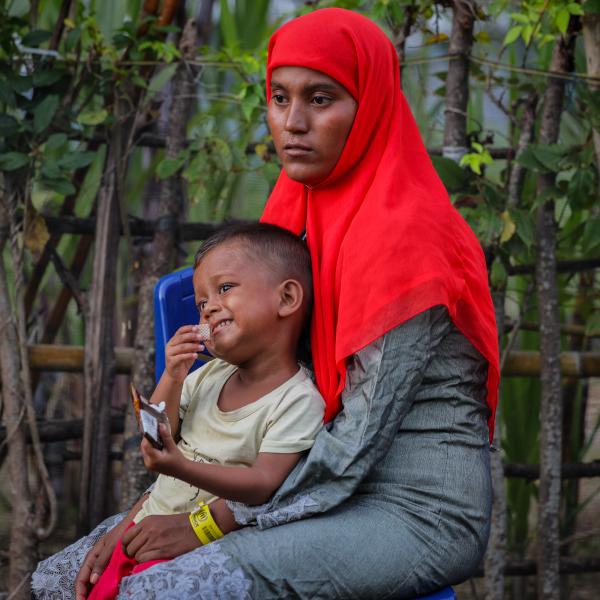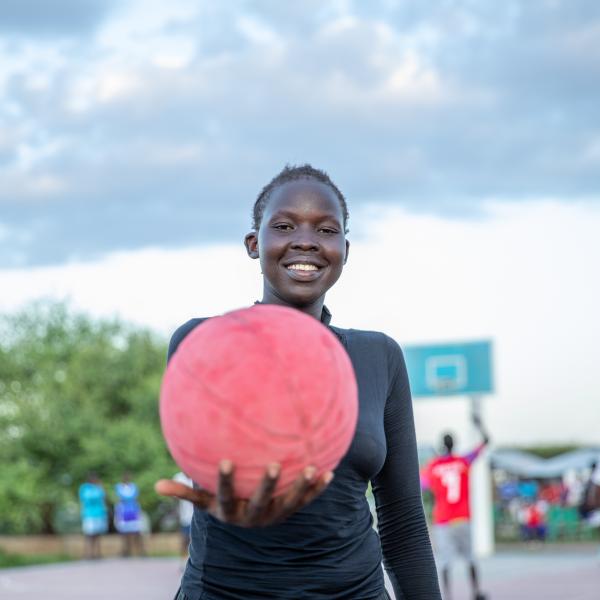In a year marked by ongoing conflicts and new emergencies, the UNHCR Global Trends 2024 report delivers a sobering milestone: by the end of 2024, 123 million people worldwide were forcibly displaced – the highest number ever recorded. This figure has nearly doubled in the past decade, illustrating a trend that shows no sign of slowing.
By April 2025, the number of forcibly displaced people had slightly decreased to 122 million – a small but notable shift after years of continuous growth. However, it remains higher than the 120 million recorded at the same time last year, reflecting nearly a decade of year-on-year increases in displacement.
At a time when public discourse often centres around perceptions and assumptions, these data provide essential clarity – and a reminder that the reality of forced displacement is often very different from what we might think.

Displacement is rising, but not where most people think
While media narratives often focus on people arriving in Europe, the vast majority of displaced individuals remain in their own countries or close to home:
- 60% of all forcibly displaced people are IDPs, meaning they have not crossed a national border.
- Two-thirds of those who do leave stay in neighbouring countries, often in regions already struggling with poverty and instability.
- In fact, 73% of all refugees are hosted in low- and middle-income countries - not in wealthy nations.
- Sudan has become the world’s largest forced displacement situation with 14.3 million refugees and IDPs, followed by Syria, Afghanistan and Ukraine.
For Switzerland, this underscores the importance of international solidarity and support for frontline countries: not only through emergency aid, but through longer-term cooperation and fair responsibility-sharing.

Children and mental health: The invisible toll
The human consequences of forced displacement go far beyond numbers.
- 41% of the world’s refugees are children, many of whom face the trauma of separation, lost schooling, and prolonged uncertainty.
- Mental health is an often-overlooked crisis. Refugees, especially women and girls, are at elevated risk of depression, anxiety, and post-traumatic stress. In countries such as Cameroon and South Sudan, 18% of women and girls suffer from depression. Older women are especially vulnerable, often isolated or without access to care.
In 2024, 175’000 medical consultations were delivered in UNHCR-supported facilities. Due to reduced funding, this represents a 6% decrease compared to previous years. Further reductions are expected in 2025 unless additional resources are mobilised.
Addressing mental health is not a luxury: it is a fundamental part of restoring dignity and rebuilding lives.

Statelessness: Millions without a country
Statelessness affects at least 4.4 million people globally; individuals who are not recognized as citizens by any state. This often means living without access to basic rights such as education, healthcare, or employment.
In 24 countries, women are still not allowed to pass on their nationality to their children; a major driver of inherited statelessness.
UNHCR’s efforts to end statelessness depend on legal reform, local partnerships, and sustained international engagement.
Durable solutions: A glimmer of hope
While the overall displacement figures are at record highs, solutions are possible when the international community invests in peace, protection, and pathways forward.
In 2024:
- 1.6 million refugees voluntarily returned to their home countries.
- 8.2 million internally displaced people were able to return home.
- 188’800 refugees were resettled in safe third countries, with the support of UNHCR and its partners.
These numbers show that hope is not lost, but scaling up these efforts requires ongoing commitment and adequate funding.
“Even amid the devastating cuts, we have seen some rays of hope over the last six months. Nearly 2 million Syrians have been able to return home after over a decade uprooted”
said Filippo Grandi, UN High Commissioner for refugees.

Why this matters for Switzerland
Switzerland has a long-standing humanitarian tradition and plays a respected role in international protection efforts. Both through its support for UNHCR and its own asylum system.
This report is a reminder that:
- Forced displacement is a global challenge that requires collective responses.
- Misinformation about who refugees are, and where they go, can lead to harmful stereotypes.
- Solidarity begins with understanding and with concrete action.
A shared responsibility
Behind every statistic lies a personal story: a family seeking safety, a child hoping to return to school, a mother rebuilding life from scratch.
As the number of forcibly displaced people continues to rise, we must not look away. The figures in UNHCR’s 2024 Global Trends report are more than just data, they are a call to action for all of us.
FAQ
When does UNHCR release the Global Trends report?
UNHCR publishes the Global Trends report annually in June, ahead of World Refugee Day (20 June). It provides the most up-to-date statistics and analysis on forced displacement worldwide, based on data from the previous calendar year.
How many people are displaced according to the 2024 Global Trends report?
According to the Global Trends 2024 report, 123 million people were forcibly displaced by the end of 2024. In April 2025, this number has slightly decreased to 122 million people. This includes refugees, asylum seekers, internally displaced persons (IDPs), and stateless people.
Where are most refugees hosted?
Contrary to common belief, 73% of refugees are hosted in low- and middle-income countries, often close to the crises they fled. Most refugees stay near their home regions and do not come to Europe.
What is the difference between a refugee and an internally displaced person (IDP)?
A refugee crosses an international border to seek protection, while an IDP remains within their home country. In 2024, 60% of forcibly displaced people were IDPs, according to UNHCR.
What can I do to support refugees?
You can make a real difference by donating to support life-saving assistance, education, and health services for refugees. Visit https://donate.unrefugees.ch/ch/en-ch/unhcr-donate to contribute or learn more about how to get involved.